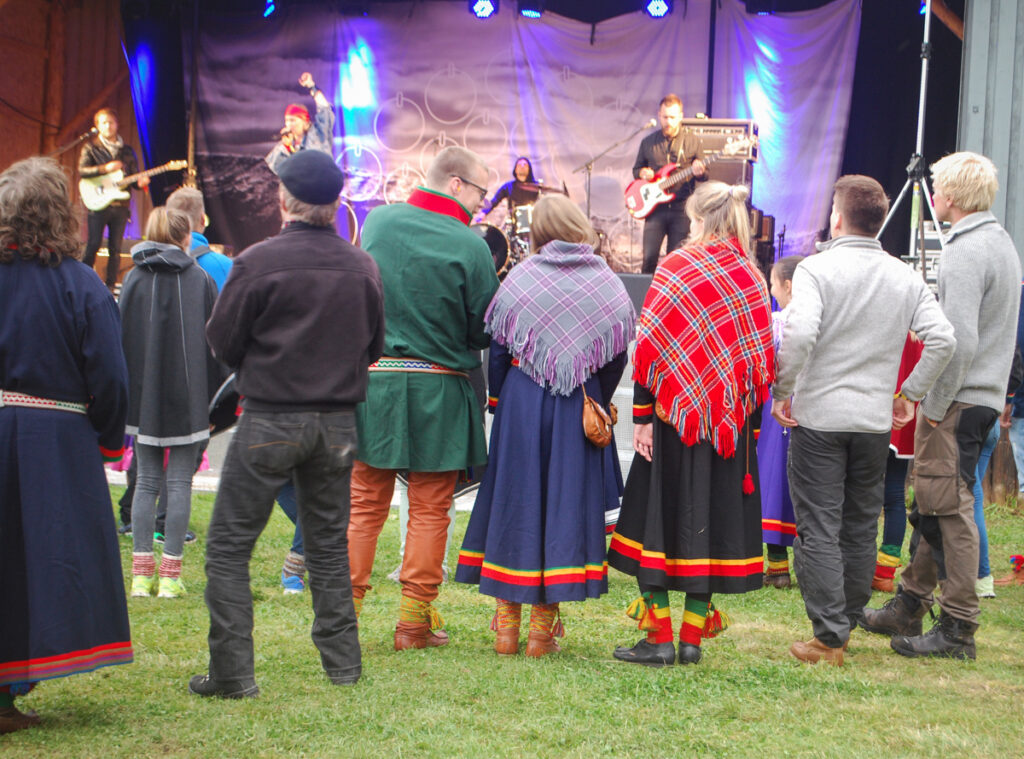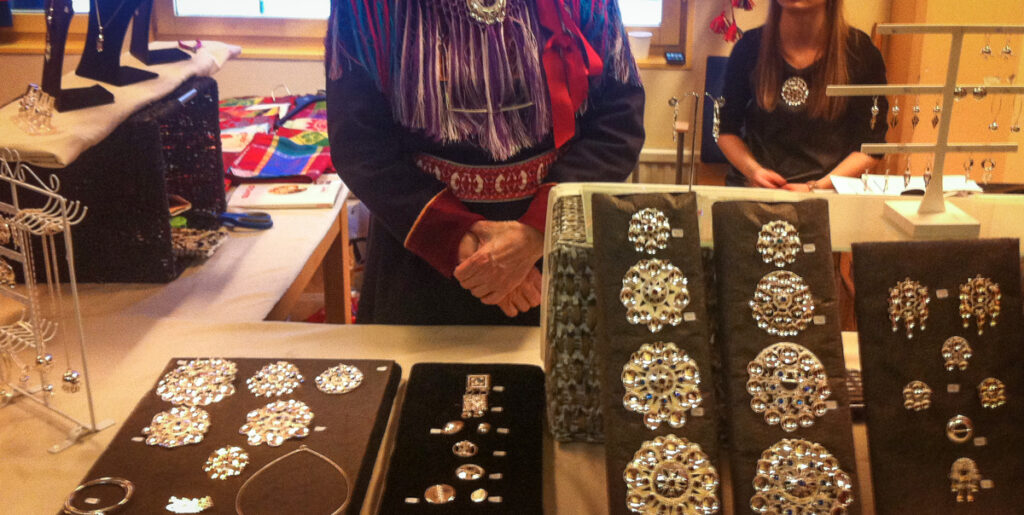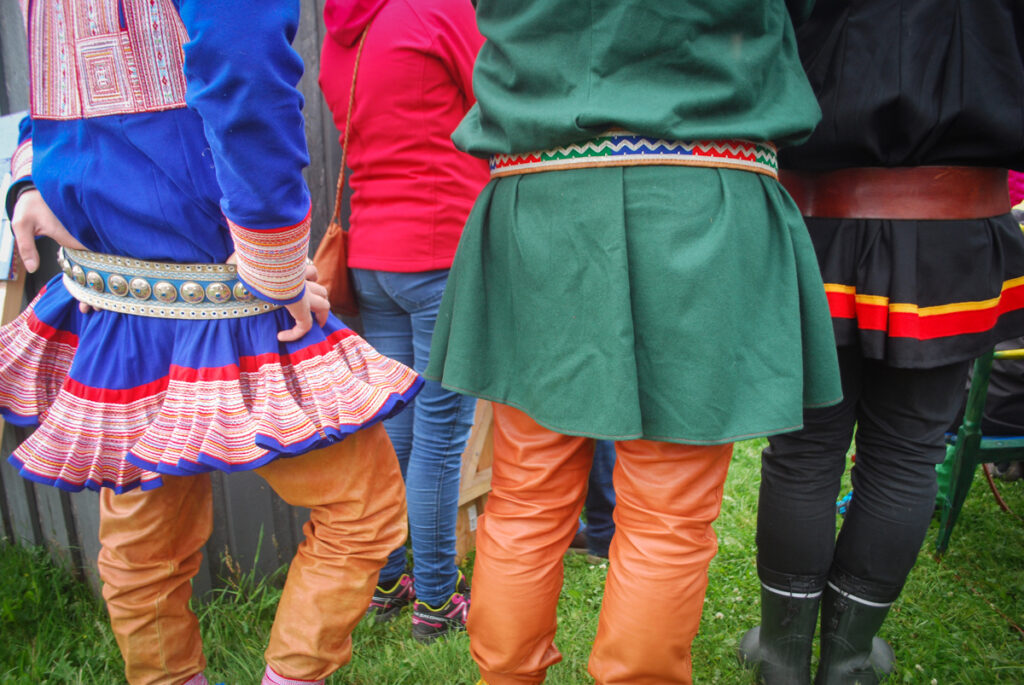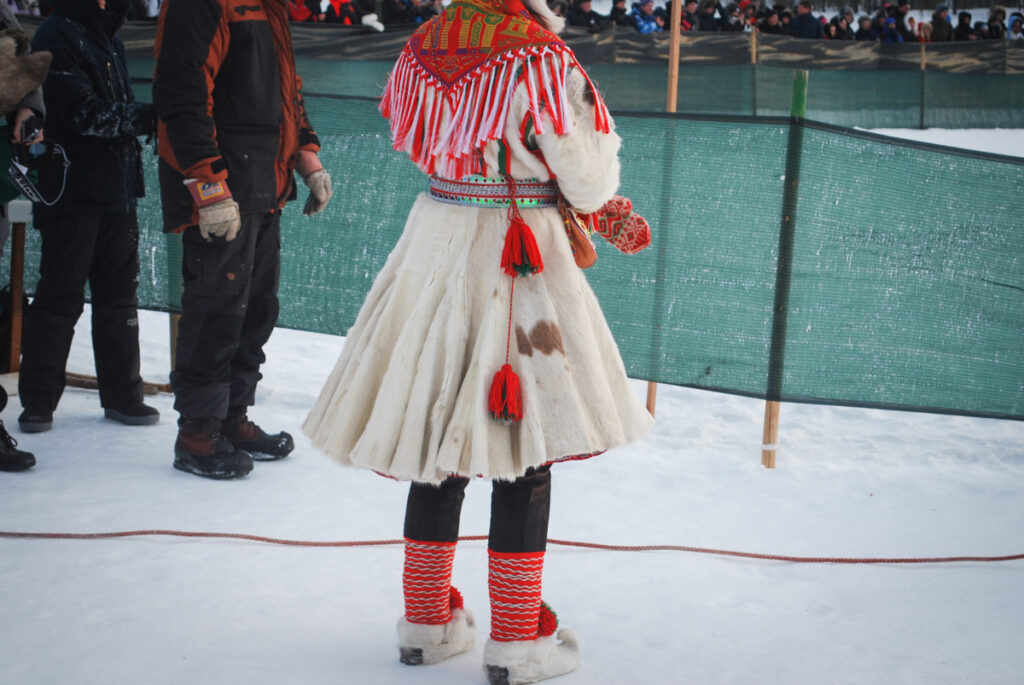Michaela Peykovska has recently defended her DPhil thesis, entitled Identity Complexity of an Indigenous Scandinavian People. In this blog post, Michaela reflects upon the significance of cultural gatherings for the indigenous Sámi people.
For centuries the Sámi indigenous people have created, organised and participated in vibrant cultural gatherings. These gatherings bring people together to meet, exchange goods and most importantly socialise with other Sámi from outside their often geographically isolated communities spanning the vast areas of Sápmi in northern Scandinavia. Gatherings and recreational events are spread throughout the year and create a well needed space for Sámi of all ages to convene with the idea of social exchange. These gatherings can be assigned into a few categories based on their contextual factors; there are music and culture-related events, policy-oriented gatherings, historically important events, events for language dissemination, social occurrences and trading functions.

However, most are in fact a mixture of all categories, so people can expect to encounter a bit of everything, from music, culture and politics to remembrance of history, and trading. Most of all, these events are a safe social space for the Sámi to interact with each other and strengthen their overall group social dynamics and connections. What really unites all these events is the purpose of interactions, culture and language reinforcement, the inter-communal creation of relationships, and the building of a stronger Sámi identity.

These events have an immense significance for the indigenous identity of young Sámi adults when it comes to human interactions, cultural exchange, establishment of social relationships, and identity-building. It is through participation in such happenings that young people can create a more rounded understanding of who they are, their social beliefs and even where they position themselves as representatives of the global indigenous community. However, being part of these events is not intended to limit one as just a peg within the indigenous society but serves more to expand one’s horizons. Young Sámi adults are introduced to the vast amount of culture, traditions, history and even present day activism that they could choose to be part of if they so wished. All these benefits are introduced through the medium of an entertaining, open-minded and light-hearted social gathering where people are invited to celebrate being Sámi amongst the safe space created for and by their own people.

Of course, as anything in life, these events are not always as utopian as they sound. For some Sámi there is a layer of stress introduced by the weight of their long lineages of indigenous ancestors, where continuing the line is a must, and they are under a certain amount of pressure to represent themselves in the best light possible. Every human has their own responsibilities to carry and the Sámi are no exception.

But overall, Sámi cultural gatherings and social events are immensely significant to the identity building of young Sámi adults and the indigenous communities within Scandinavia. Together with the majority population from the region, they should do their best to preserve these events for many generations to come, so as to serve the dissemination of culture, tradition, history and social enrichment.


